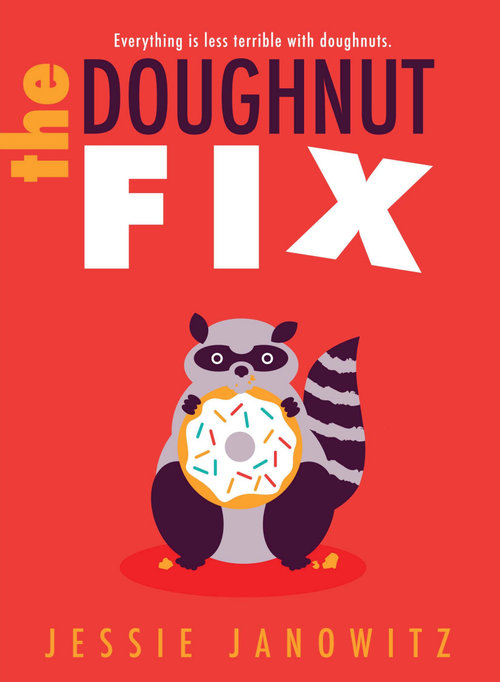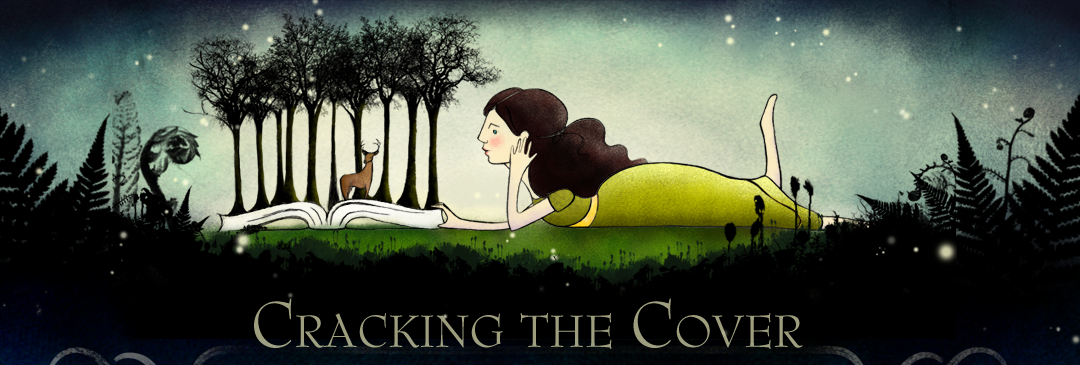 Jessie Janowitz is the author of The Doughnut Fix. The Following is a complete transcript of her interview with Cracking the Cover.
Jessie Janowitz is the author of The Doughnut Fix. The Following is a complete transcript of her interview with Cracking the Cover.
Why do you write?
My mother wrote, and she introduced me to storytelling when I was very young, both by reading to me and writing down stories I made up. I was raised to believe that storytelling is essential to the human experience, that we need to tell stories to make sense of what happens to us, of our dreams, and of our fears.
Why specifically for young people?
My favorite books, the ones that mean the most to me, are and have always been children’s books.
Where did the idea for The Doughnut Fix come from?
There were two real sparks that set me on the path to writing The Doughnut Fix. Strangely perhaps, neither was a doughnut.
Spark #1: Back in 2008–I incubate stories for a long time before I put pen to paper–I witnessed kids being pulled from my son’s school mid-year. It was during the financial crisis, and these families’ circumstances had changed so drastically and suddenly that they had to leave their homes and community. It was clear that these kids sensed something had gone terribly wrong, but they were never told the complete story. Moving can be traumatic enough, and I wondered what that experience would be like if the decision was taken suddenly, and you knew you weren’t getting all the facts.
 Spark #2: This sign is in the window of a small market in a very small town I drive through all the time. It always made me laugh and wonder what the story behind it might be. There was something about the store, one that had seen better days, that made me suspect that it didn’t actually have chocolate cream doughnuts, which made the sign so much better, not as a potential doughnut source, of course, but as story material. A lying sign really got my imagination going.
Spark #2: This sign is in the window of a small market in a very small town I drive through all the time. It always made me laugh and wonder what the story behind it might be. There was something about the store, one that had seen better days, that made me suspect that it didn’t actually have chocolate cream doughnuts, which made the sign so much better, not as a potential doughnut source, of course, but as story material. A lying sign really got my imagination going.
Why do you think this story will resonate with young readers?
For kids who have siblings, I believe the sibling dynamics will resonate with them, and I believe (and have observed) kids really responding to the sense of empowerment that Tris attains through his struggle to start his own doughnut business. In fact, it’s inspired me to launch The Doughnut Fix Start-Your-Own-Business Challenge so they can experience a bit of that for themselves.
The Doughnut Fix is your first published novel. Is it your first book?
I wrote an “apprentice novel.” It is very long and deeply flawed. It isn’t sure what genre it is, and not in an intentional how-cool-is-that, genre-bending way. It is simply confused, because I was. There is magic in the story, but the rules of that magic are unclear. My characters are in their heads too much. The plot is predictable. The personal stakes feel manufactured. One might argue that this project was an expensive “mistake,” writing multiple drafts of a 300-page novel that simply sits on my hard drive. Couldn’t I have just read a craft book? Couldn’t I have taken classes and solicited feedback? I did, and I do, but I could have read every craft book there is and had Pulitzer Prize-winning mentors, I was never going to learn to write a novel without just doing it. I cherish that unpublished book and all the mistakes in it for all they taught me.
What are you working on now?
I’m revising the sequel The Doughnut Fix which will be published in the spring.
Is there a book from your own childhood that still resonates with you now?
So many! Ira Sleeps Over, The Wolves of Willoughby Chase, Corduroy…(I could go on!)
